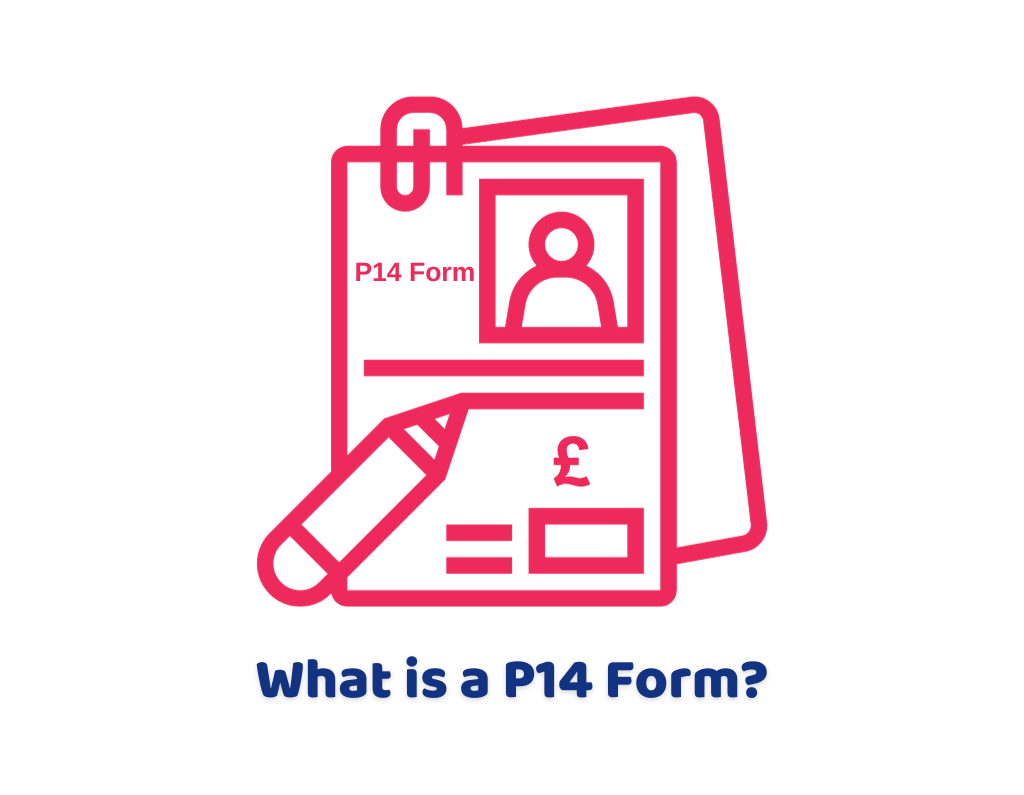Let’s kick off our discussion about what is a P14 form. In the UK, the P14 form is an important document that employers use to report their employees’ end-of-year payroll information to HM Revenue and Customs (HMRC). It’s a part of the PAYE (Pay As You Earn) system and provides crucial details about each employee’s earnings, tax deductions, and National Insurance contributions for the tax year.
When it comes to completing the P14 form, employers need to ensure that they accurately record and report the necessary information for each employee. Employers also need to report the total pay, tax deducted, and National Insurance contributions for each employee.
The P14 form is a vital component of the payroll process, as it helps calculate employees’ tax liabilities and ensures that they receive the correct tax codes and refunds, if applicable. Employers must fill out the P14 form correctly and submit it to HMRC by the required deadline to maintain compliance with tax regulations.
What is a P14 Form?
The P14 form in the UK is used to report employee earnings and deductions to HMRC. The form includes details like the employee’s National Insurance number, earnings, tax deducted, and any benefits or expenses provided. Employers need to submit this form at the end of each tax year to ensure accurate tax calculations for their employees. It helps HMRC assess the correct amount of tax due and ensures that employees receive accurate tax codes.
How to Fill Out the P14 Form?
Filling out the P14 form in the UK is an important step in accurately reporting employee earnings and deductions. To fill out the form, you’ll need to gather information such as the employee’s National Insurance number, total earnings, tax deducted, and any benefits or expenses provided. It’s crucial to submit the form at the end of each tax year to HMRC to ensure correct tax calculations.
1- Employer and Employee Details
When filling out the P14 form, you’ll need to provide detailed information about both the employer and the employee. The PAYE reference number is a unique identifier assigned by HMRC to each employer for tax purposes.
The National Insurance number is a unique identifier for each individual in the UK, and it helps HMRC track their contributions and benefits. The tax code is used to determine the amount of tax to be deducted from the employee’s earnings. It’s crucial to have the correct tax code for each employee to ensure accurate tax calculations.
2- Tax and National Insurance Contributions (NIC) Details
The PAYE reference number is a unique identifier assigned by HMRC to each employer for tax purposes. The National Insurance number is a unique identifier for each individual in the UK, and it helps HMRC track their contributions and benefits. It’s crucial to have the correct tax code for each employee to ensure accurate tax calculations.
3- Statutory Payments and Student Loan Deductions
When it comes to tax, you’ll need to provide the total amount of tax deducted from each employee’s earnings for the tax year. This includes any income tax, student loan repayments, or other deductions made. It’s important to accurately calculate and report these amounts to meet the correct tax liabilities.
Now, let’s talk about NIC details. National Insurance Contributions are payments made by the employee and the employer to fund various social security benefits in the UK. On the P14 form, you’ll need to report the total amount of NICs deducted from the employee’s earnings, as well as the employer’s NIC contributions. This information helps HMRC track and ensure compliance with NIC obligations.
4- Pay and Income Tax Details
Statutory payments are payments made to employees by their employers to cover periods of absence due to maternity, paternity, adoption, or sickness. These payments are usually made by the statutory rates set by the government. When filling out the P14 form, you’ll need to provide the details of any statutory payments made to your employees during the tax year. This includes the type of statutory payment, the amount paid, and the dates of the payments.
Now, let’s move on to student loan deductions. Student loan deductions are made from an employee’s earnings if they have a student loan to repay. The amount deducted depends on the employee’s income and their specific student loan plan. When completing the P14 form, you’ll need to include the details of any student loan deductions made for each employee. This includes the amount deducted and the frequency of the deductions.
5- Certificate by Employer
When it comes to pay, you’ll need to provide the total amount of earnings for each employee during the tax year. This includes their regular salary, overtime pay, bonuses, commissions, and any other forms of income they received from your company.
In addition to the employee’s earnings, you may need to report other sources of income they received during the tax year. This could include income from self-employment, rental properties, investments, or any other type of income they earned outside of their regular employment. It’s crucial to gather and report all relevant income details to ensure accurate tax calculations. Be precise when filling out pay and income details on the appropriate forms.
The Bottom Line
To wrap up our discussion about what is a P14 form in the UK, we can say, that the P14 form is an important document that employers use to report their employees’ end-of-year payroll information to HMRC. It contains detailed information about each employee’s earnings, tax deductions, and National Insurance contributions for the tax year.
This includes their full name, address, National Insurance number, and employment start and end dates. Employers also need to report the total pay, tax deducted, and National Insurance contributions for each employee. It’s essential to carefully fill out the P14 form to ensure accurate reporting and compliance with HMRC regulations. This form plays a crucial role in calculating employees’ tax liabilities and ensuring that they receive the correct tax codes and refunds, if applicable.

